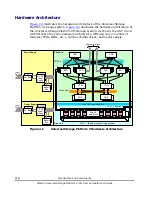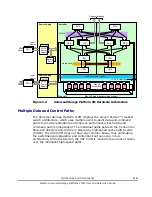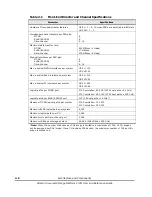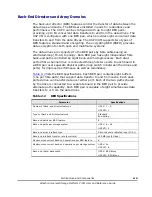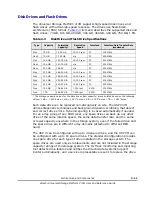
2-12
Architecture
and
Components
Hitachi Universal Storage Platform V/VM User and Reference Guide
Service Processor
The Universal Storage Platform V/VM includes a built-in custom PC called the
service processor
(SVP). The SVP is integrated into the controller and can only
be used by authorized Hitachi Data Systems personnel. The SVP enables the
Hitachi Data Systems representative to configure, maintain, service, and
upgrade the storage system. The SVP also provides the Storage Navigator
functionality, and it collects performance data for the key components of the
USP V/VM to enable diagnostic testing and analysis. The SVP is connected with
a service center for remote maintenance of the storage system. The SVP does
not have access to any user data stored on the USP V/VM.
Power Supplies
Each storage cluster is powered by its own set of redundant power supplies,
and each power supply is able to provide power for the entire system, if
necessary. Because of this redundancy, the Universal Storage Platform V/VM
can sustain the loss of multiple power supplies and still continue to operate. To
make use of this capability, the USP V/VM should be connected either to dual
power sources or to different power panels, so if there is a failure on one of
the power sources, the USP V/VM can continue full operations using power
from the alternate source.
The AC power supplied to the USP V/VM is converted by the AC-DC power
supply to supply 56V/12V DC power to all storage system components. Each
component has its own DC-DC converter to generate the necessary voltage
from the 56V/12V DC power that is supplied.
Batteries
The Universal Storage Platform V/VM uses nickel-hydrogen batteries to provide
backup power for the control and operational components (cache memory,
shared memory, FEDs, BEDs) as well as the data drives. The configuration of
the storage system and the operational conditions determine the number and
type of batteries that are required.





